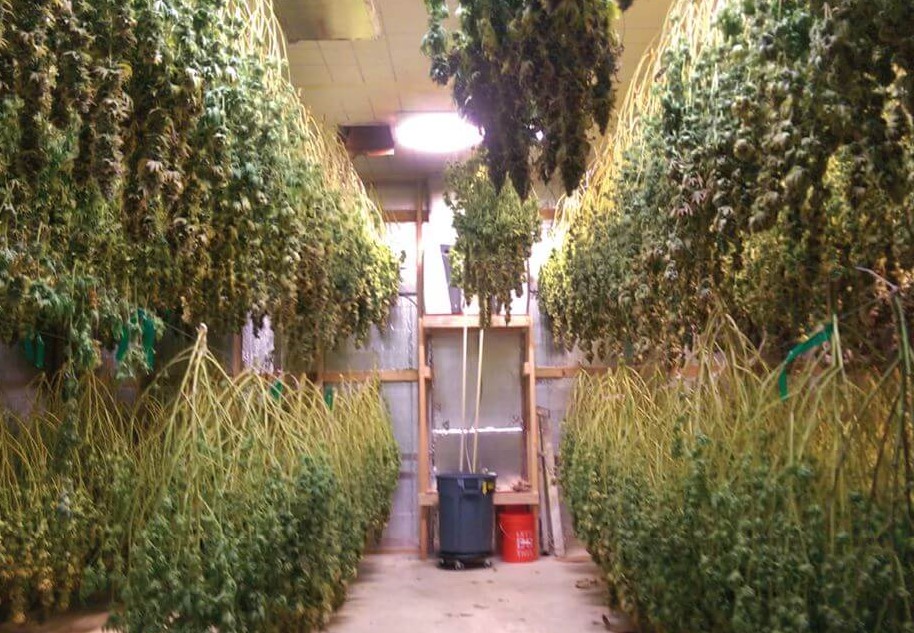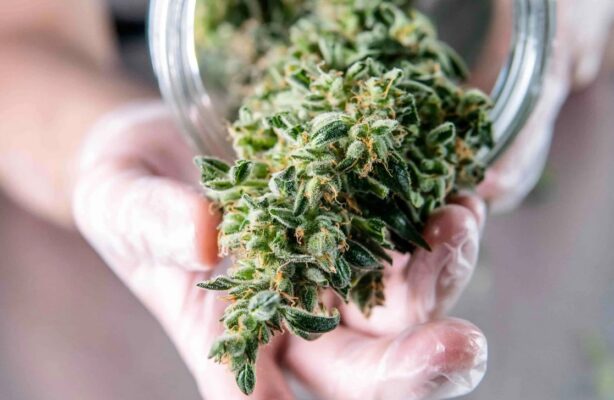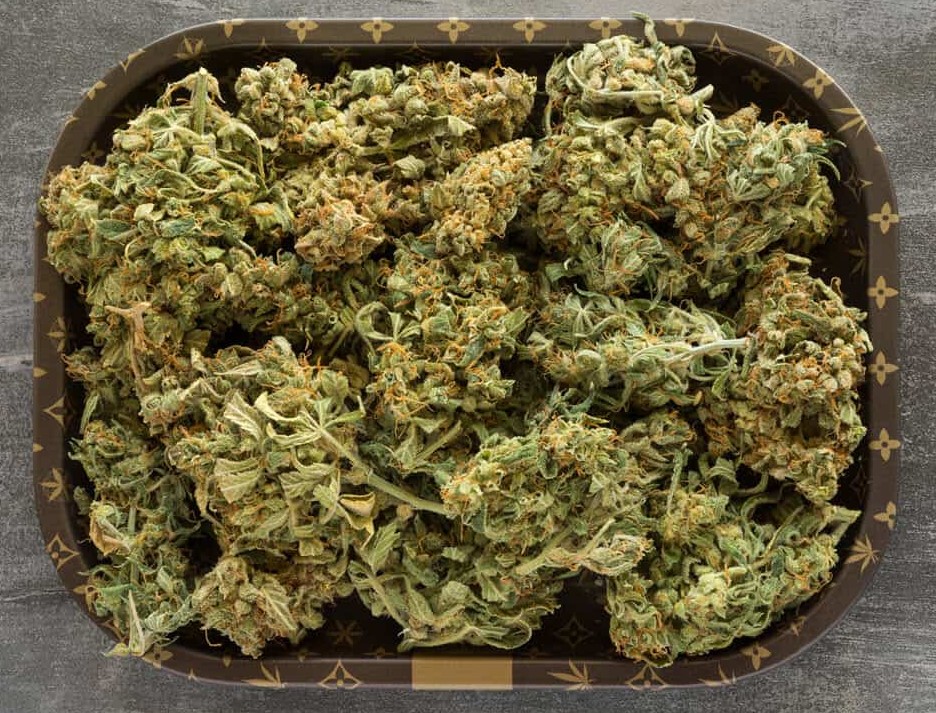Uncategorized
Curing and Dry Weed Guide
The drying and curing of plants are crucial steps in the manufacturing process of cannabis products, especially when the goal is to use the flower form. Drying removes moisture while curing alters the bud’s flavor profile and effects.
When drying and curing cannabis, there are a few things to keep in mind, such as temperature, humidity, airflow, and lighting. Even the tiniest variance from ideal circumstances might have a significant impact on the finished product’s quality.
In this article, you’ll learn why drying and curing cannabis is so essential. You’ll also discover what the main variables to consider are when developing your own method.
Dry weed, curing cannabis
After harvest, cannabis plants are dried and then cured. The drying process is often simpler than curing and usually involves hanging the plants in a controlled environment to lose most of their moisture.
Drying harvested cannabis prevents spoilage, inhibits microbial growth, extends shelf life, and allows for a pleasant consumer experience.
Curing ensures that dried flower batches are uniform in humidity and moisture content while stored in containers.
Once the plants have been harvested, they must be processed within strict environmental parameters. The flavor profile of the plants may be significantly altered, chlorophyll content reduced, and potency slightly modified, affecting cannabinoid ratios but not overall THC concentration. It also has an impact on the cannabis experience at pipe or bong smoking time.
Curing and drying are necessary steps in the process of extracting cannabis flavor and aroma because they allow the plant to release its oils. “They also prepare the cannabis flower for consumption by removing moisture and unwanted sugars that would otherwise cause a burning sensation in the throat,” says Leo Gontmakher, CEO of 4Front Ventures.
Jaraud Wood, harvest manager at Commonwealth Alternative Care, explains that drying and curing are processes in which a grower can save all the effort put into growing the plant. “If not dried and cured correctly, months of labor during the grow process can go to waste,” he says. “The goal is to remove moisture from the flowers while preserving a high level of secondary metabolites like cannabinoids, terpenes, and flavonoids. These compounds give finished flower its taste and effects.”

Though drying and curing cannabis may not be necessary for all product types, it is still important to consider the type of product you want before determine the amount of time needed to dry and cure your weed. Nick Tennant, founder and CTO or Precision Extraction, explains that approximately fifty percent of products sold at dispensaries are extracts. This means that the consideration for drying and curing cannabis used to make these products differs from those used for raw plant products.
Plants that are used to generate live resin items, for example, may be frozen dried straight after harvest. Many other extraction techniques use high temperatures, pressures, or solvents to break down terpenes and other components from the original plant material. As a result, manufacturers must reintroduce or replace them in the finished product. You don’t have to worry about bud structure or chlorophyll content when using live resins, according to Tennant.
The following sections will focus on plant processes for blooms ( buds) rather than extracts.
How to dry cannabis
The drying process begins immediately after harvest and it’s crucial to guarantee that the job is carried out correctly, as Graham Farrar, chief cannabis officer of Glass House Farms, explains.
Each strain will require a distinct drying technique, according to him. However, the most important aspect is getting as much water out of the plant in the first day. He says you may dry the plant more slowly over 10 days after 24 hours have elapsed.
The drying process you choose will be determined by the trimming technique you use:
- Dry trimming: If the plants you wish to cut are already dry, hang them from a line or hanger. Hanging is preferable because it prevents buds from getting deformed and drying more evenly that way. Bend a branch to see if the plant is ready for trimming. If it bends, it needs more drying time. If the stem snaps, it’s time to prune and cure the plant. A water activity meter is another technique for determining when the plant is ready to be cured. If the water activity is less than 0.6-0 on a scale of 1 to 10,
- Wet trimming: If you trim the plants before drying, you’ll have smaller plant parts to dry and will need a rack. Squeezing buds can be used to determine when they’re ready for curing. If they still feel wet or moist, they may require more time in between cures. A water activity meter or moisture analyzer might also be utilized in this situation.
According to Wood, the most important concerns when drying are the desired strain characteristics and the surrounding environment: temperature, humidity, ventilation, and light. These factors aren’t exact, but they do fall within acceptable ranges owing to the wide range of cultivation and storage conditions across the industry. You should follow a method based on science for removing available moisture early in the drying process, within the first two weeks, then slowly lowering moisture content over one to two weeks until it is at an appropriate level determined by state rules.
Cannabis drying temperature
The goal is to strike a balance between the two. “Yes, the product must be warm enough for moisture to evaporate. Product deterioration, on the other hand, can begin at as low as 68 degrees Fahrenheit,” says Wood. The drying temperatures range from 55-74 degrees Fahrenheit. To not volatilize terpenes or over dry the goods, aim to dry slowly enough.
Myrcene, a terpene also found in mangoes, is one example he provides. “This begins to volatilize at low temperatures, so in order maintain aromas and flavors, we must keep the temperature of the drying space low.”
The humidity needed for drying cannabis
“We monitor humidity in order to avoid mold from developing on the plant. However, we don’t want the product to crumble to dust if it’s excessively dry,” adds Wood. For drying harvested cannabis flower, relative humidity levels of 40-60 percent are ideal.
Wood goes on to say that while the plants are drying, it’s essential to have filtered air moving constantly throughout the space. This airflow should be gentle and not come in direct contact with any of the plants. Additionally, it’s crucial to check all filters, dehumidifiers, fans, and air purification systems regularly for mold or bacteria growth. If either should happen to contaminate the drying plant material, there is a chance it will no longer pass safety testing ordinances.
Moreover, we can’t forget about lighting. Wood explains that too much light will cause the plant’s oils to rapidly degrade–something we obviously want to avoid during this process.
How long to dry cannabis
“Typically, cannabis plant drying takes 7–10 days, depending on the strain.” Gontmakher adds. However, due to different environmental variables, the required amount of time and cure may vary somewhat by strain.
As far as storage, Tennant advises storing in a cool, dry place. There is no need to freeze the buds, according to Tennant; however, they should be stored in an airtight container or sealed bag at 50–60% humidity and 55–65°F.
How to cure cannabis
After the product is dry, the curing process begins. This part is often called an artisanal process, and Tennant believes it’s very similar to making fine wines. “They’re all aged differently based on the person’s process.” Farrar emphasizes the need for fine-tuning your setup. “While you can’t repair a poorly grown plant in cure, you can certainly ruin a well-grown one, so it’s critical to get it right.”
Plants are usually loosely packed in glass pots after being trimmed. These may be wide-mouth mason jars for small batches, but glass-lined vessels can be utilized in large-scale production. Because this is a cottage industry, there is no one-size-fits-all option. Some producers prefer to cure plants in porous containers rather than airtight vessels, such as paper bags or wooden boxes. 5 – 10 gal plastic buckets with screw top lids or curing tubes with container liners are popular in large-scale industries.

Curing flower
The drying process is quicker than the curing method, with plants kept in a dark, controlled environment between 40-50 percent humidity and a temperature below 70 degrees for one week to several months. Mold and other pollutants must be checked for at various stages of the process; likewise, the curing vessel must be opened on a regular basis.
As Farrar puts it, “you’ll need additional time for the moisture to rebalance and distribute equally throughout the bud.” Curing is not a “set it and forget it” procedure, and plants must be checked on a regular basis. Vessels are often “burped” at set intervals, allowing gases (ethylene, CO2, etc.) to escape while oxygen enters.
Leave jars containing mold open for a few hours to help the problem. If you smell ammonia, it means that anaerobic bacteria is present and will require vessels to be left open longer in order for them to die off. You can also expose product to UV-C light or irradiation which will halt microbial growth altogether. As curing progresses, checking less often will suffice.
Conclusion
Overall, the general rule when curing and drying cannabis is to take it slow and steady. Tennant’s top advice is “Be patient; don’t attempt to hurry it.” And Wood concurs, adding that low temperatures promote higher secondary metabolite levels and the longer you can cure your product, the cleaner, smoother, and more delicious it will be.


